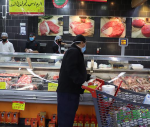You are here
The election question
Mar 23,2014 - Last updated at Mar 23,2014
With street protests roiling democracies from Bangkok to Kyiv, the nature and legitimacy of elections are once again being questioned.
Are popular elections an adequate criterion by which to judge a country’s commitment to democracy?
Beginning next month, elections in Afghanistan and India will throw this question into even sharper relief.
Afghanistan will hold a presidential election on April 5. But a smooth electoral process is far from guaranteed — especially given that US President Barack Obama has already informed Afghan President Hamid Karzai that the United States and NATO have no choice but to withdraw their troops by the end of this year.
The US and NATO would prefer to avoid an abrupt and complete withdrawal — a preference that Afghanistan’s neighbours share, fearing that any resulting disorder would spill over their borders.
The problem is that Karzai has refused to sign a painstakingly negotiated bilateral security agreement governing a post-2014 US-NATO mission in Afghanistan, leaving Obama with little choice but to begin contingency planning.
The only conceivable alternative would be to await the next president’s inauguration, in the hope that Karzai’s successor would formally accept the agreement.
Karzai’s intransigence is rooted in his desire to launch a peace process between the government and the Afghan Taliban — similar to that which Pakistan has initiated with its own Taliban.
He believes that the security agreement with the US could be a useful bargaining chip in such negotiations.
But this view fails to account for the potential consequences of a premature withdrawal of US and NATO forces, including diminished morale among Afghan forces and renewed hope among the Taliban that they will be able to retake control of the country relatively soon.
In this context, it is difficult to predict what the presidential election will bring. Ostensibly, it will strengthen democracy in Afghanistan, given the likelihood of a large voter turnout. But numbers alone will not be enough to stop the Taliban, which already ruled the country once, despite being a small minority force.
Just two days after Afghanistan’s polls close, India will launch its marathon general election, to be concluded on May 12.
Although India has been a functioning democracy for almost seven decades, its government remains plagued by corruption and inefficiency.
Add to that the logistics of conducting elections in so vast a country, and the complexity of India’s electoral process becomes starkly apparent.
For starters, nearly 100 million people have been added to the voter rolls since the last national election in 2009. Roughly 814 million people — more than the populations of the US, Indonesia, Brazil, Russia and Bangladesh combined — will be eligible to vote, making the upcoming election the largest since independence in 1947.
Complicating matters further are geographical and climactic disparities among constituencies.
The Himalayan highlands, for example, will remain snowbound until May, by which time monsoon rains will have begun to sweep southern and northeastern India.
Accommodating this massive pool of voters, without compromising the results, will require roughly 930,000 polling stations, equipped with electronic voting machines, and one million election workers to manage the process. The elections will occur in nine phases, staggered over five weeks.
Even printing sufficient electoral rolls is no small task, given that each of a party’s 7-10 parliamentary candidates in a constituency is entitled to a copy, with each copy comprising the names of more than one million voters.
Though it is impossible to know at this point how many candidates will run, it is estimated that 53 recognised political parties will be represented in the elections.
Interestingly, India’s election commission has introduced a “none of the above” option to the ballot for this election, following a ruling by the supreme court last year.
But while citizens’ demand for the option reflects widespread dissatisfaction with the current government, the provision ultimately will have little impact, given that candidates with the most votes will be elected, even if a majority of voters rejects all of the candidates.
Nonetheless, the upcoming election will undoubtedly bring a change in government. The question is whether new faces and a different balance of parties will lead to more stable and effective governance, or to a continuation of the current government’s misrule — what the Indian academic Pratap Bhanu Mehta has called “a plutocracy of the most insidious kind”.
Despite the very different challenges that lie ahead for Afghanistan and India, their electoral experiences will have one thing in common: They will serve as a clear reminder that there is no easy route to democracy.
One hopes that, at the very least, next month’s elections amount to a step forward.
The writer, a former Indian finance minister, foreign minister and defence minister, is the author of “Jinnah: India – Partition – Independence and India At Risk: Mistakes, Misconceptions And Misadventures Of Security Policy”. ©Project Syndicate, 2014. www.project-syndicate.org











